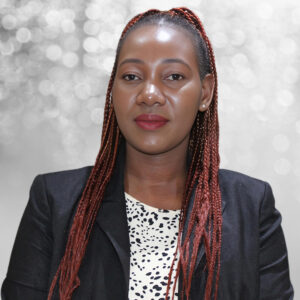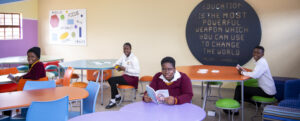Nearly three quarters of South African children living with disabilities are currently not in school.* As we observe Child Health Month this August, Adopt-a-School Foundation (AAS) urges all stakeholders to work together to develop strategies to support and educate these marginalised learners.
“Schools in disadvantaged communities face many challenges. They are very seldom able to sufficiently accommodate learners with special needs, ” says Steven Lebere, Executive Director of Adopt-a-School.
“As a result, most of these children simply never enter the formal schooling system, even though many of them are very bright and would thrive in the right environment,” continues Lebere.
Not surprisingly South Africans living with disabilities suffer from the lowest educational attainment of any group in the population. A quarter of severely disabled South Africans have no formal education, and just 5% attain any form of higher education.**
Where “special” schools for learners with disabilities do exist, they are often severely under- resourced. The Thembelihle Cerebral Palsy Care Centre in the Emjindini Township in Barberton, Mpumalanga was one facility facing such challenges. Since 2010, the centre had housed 30 young learners with severe disabilities in what was little more than a wooden shack. The learners depended entirely on the unwavering dedication of a single carer – Ma Ennie.
Concerned with the plight of these children, and seeking to support Ma Ennie’s good work, Barberton Mines approached Adopt-a-School Foundation to assist them in upgrading the facility into a long-lasting, sustainable structure that could better serve the needs of this vulnerable community.
The result is a state-of-the-art Centre, unveiled earlier this year, that includes classrooms, dormitories, ablution facilities, a dispensary, kitchen and dining facilities, offices and two flats for on-site staff. “The Thembelihle project was a first for us, but we hope to extend our support to more special needs facilities in future,” says Lebere.
“The Department of Basic Education’s schools act states that all schools must be inclusive of children with special needs. Teachers are not always equipped to diagnose learners with learning disabilities or intervene effectively,” says Lebere. “At AAS we want to support every aspect of our adopted schools, from the facilities to the teachers to the health and emotional wellbeing of the learners,” explains Lebere.
This unique, holistic approach to supporting schools is called the Whole School Development (WSD) model. AAS uses this mechanism to improve and uplift the academic, infrastructural, social and security environment in their adopted schools. WSD ensures that schools have the necessary management and community leadership to support an environment conducive to excellence in both teaching and learning.
“.We always ensure that we up empower and uplift the surrounding community. For example, during the Thembelihle project, 60 temporary jobs were created for local community members,” says Lebere. “This resulted in the transfer of valuable skills to these workers including bricklaying, paving, plumbing and project management skills.”


